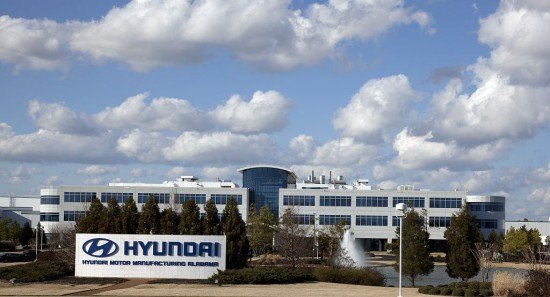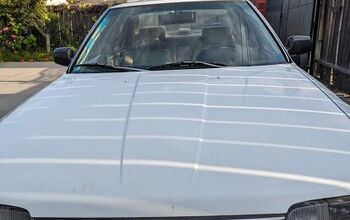Lawsuit Settlement Highlights Incentive Pitfalls

A long-running lawsuit over the value of the land on which Hyundai’s Montgomery, Alabama plant is located has been settled. The Montgomery Industrial Development Board will pay former landowners $3.45 million to settle their claims. The particulars of the case illustrate the potential hazards faced by advocacy groups when they attempt to incentivize industrial development.
According to the story in the Montgomery Advertiser, the nearly decade-long lawsuit came to a head last November, when a jury awarded the plaintiffs $4.87 million in damages. The plaintiffs are a group of landowners whose acres were purchased by the Industrial Development Board (IDB) for the development of the Hyundai plant. The IDB is a quasi-public body whose members are appointed by the Montgomery City Council. In Alabama, these development boards are the bodies through which industrial incentive money is typically disbursed.
The landowners initially agreed to accept a price of $4,500 an acre for their land after negotiations with the IDB. This price was structured as part of an “option” deal: the land would only be purchased if it was found to be absolutely necessary to construct the plant. A conflict arose when a lone holdout, realizing the value of their position, negotiated a price of $12,000 an acre. This triggered a lawsuit by the other landowners, who had a clause in their contracts forbidding any one owner to receive more compensation than another. After a lengthy procession through the courts, the IDB has agreed to a settlement rather than prolonging the case. It’s still unclear where the money to pay for the settlement will come from. The Board’s website lists land sales, member fees, and certificates of deposit as some of the ways that it raises revenue; it’s also empowered to issue bonds, under the terms of state law.
There’s no question that Hyundai’s arrival has been a major boon to Montgomery, and to Alabama in general. The state and local government incentives offered to the company were instrumental in getting the new plant built. Even so, this lawsuit attests to the fact that incentive packages often carry hidden costs, especially in the legal arena. Caught between the promises made to Hyundai and the need to fairly compensate landowners, the Board got stuck in a bad negotiating position. Now it will have to cough up much more money than originally planned.

More by J.Emerson
Latest Car Reviews
Read moreLatest Product Reviews
Read moreRecent Comments
- Bd2 Lexus is just a higher trim package Toyota. ^^
- Tassos ONLY consider CIvics or Corollas, in their segment. NO DAMNED Hyundais, Kias, Nissans or esp Mitsus. Not even a Pretend-BMW Mazda. They may look cute but they SUCK.I always recommend Corollas to friends of mine who are not auto enthusiasts, even tho I never owed one, and owned a Civic Hatch 5 speed 1992 for 25 years. MANY follow my advice and are VERY happy. ALmost all are women.friends who believe they are auto enthusiasts would not listen to me anyway, and would never buy a Toyota. They are damned fools, on both counts.
- Tassos since Oct 2016 I drive a 2007 E320 Bluetec and since April 2017 also a 2008 E320 Bluetec.Now I am in my summer palace deep in the Eurozone until end October and drive the 2008.Changing the considerable oils (10 quarts synthetic) twice cost me 80 and 70 euros. Same changes in the US on the 2007 cost me $219 at the dealers and $120 at Firestone.Changing the air filter cost 30 Euros, with labor, and there are two such filters (engine and cabin), and changing the fuel filter only 50 euros, while in the US they asked for... $400. You can safely bet I declined and told them what to do with their gold-plated filter. And when I changed it in Europe, I looked at the old one and it was clean as a whistle.A set of Continentals tires, installed etc, 300 EurosI can't remember anything else for the 2008. For the 2007, a brand new set of manual rec'd tires at Discount Tire with free rotations for life used up the $500 allowance the dealer gave me when I bought it (tires only had 5000 miles left on them then)So, as you can see, I spent less than even if I owned a Lexus instead, and probably less than all these poor devils here that brag about their alleged low cost Datsun-Mitsus and Hyundai-Kias.And that's THETRUTHABOUTCARS. My Cars,
- NJRide These are the Q1 Luxury division salesAudi 44,226Acura 30,373BMW 84,475Genesis 14,777Mercedes 66,000Lexus 78,471Infiniti 13,904Volvo 30,000*Tesla (maybe not luxury but relevant): 125,000?Lincoln 24,894Cadillac 35,451So Cadillac is now stuck as a second-tier player with names like Volvo. Even German 3rd wheel Audi is outselling them. Where to gain sales?Surprisingly a decline of Tesla could boost Cadillac EVs. Tesla sort of is now in the old Buick-Mercury upper middle of the market. If lets say the market stays the same, but another 15-20% leave Tesla I could see some going for a Caddy EV or hybrid, but is the division ready to meet them?In terms of the mainstream luxury brands, Lexus is probably a better benchmark than BMW. Lexus is basically doing a modern interpretation of what Cadillac/upscale Olds/Buick used to completely dominate. But Lexus' only downfall is the lack of emotion, something Cadillac at least used to be good at. The Escalade still has far more styling and brand ID than most of Lexus. So match Lexus' quality but out-do them on comfort and styling. Yes a lot of Lexus buyers may be Toyota or import loyal but there are a lot who are former GM buyers who would "come home" for a better product.In fact, that by and large is the Big 3's problem. In the 80s and 90s they would try to win back "import intenders" and this at least slowed the market share erosion. I feel like around 2000 they gave this up and resorted to a ton of gimmicks before the bankruptcies. So they have dropped from 66% to 37% of the market in a quarter century. Sure they have scaled down their presence and for the last 14 years preserved profit. But in the largest, most prosperous market in the world they are not leading. I mean who would think the Koreans could take almost 10% of the market? But they did because they built and structured products people wanted. (I also think the excess reliance on overseas assembly by the Big 3 hurts them vs more import brands building in US). But the domestics should really be at 60% of their home market and the fact that they are not speaks volumes. Cadillac should not be losing 2-1 to Lexus and BMW.
- Tassos Not my favorite Eldorados. Too much cowbell (fins), the gauges look poor for such an expensive car, the interior has too many shiny bits but does not scream "flagship luxury", and the white on red leather or whatever is rather loud for this car, while it might work in a Corvette. But do not despair, a couple more years and the exterior designs (at least) will sober up, the cowbells will be more discreet and the long, low and wide 60s designs are not far away. If only the interiors would be fit for the price point, and especially a few acres of real wood that also looked real.


































Comments
Join the conversation
My hometown, Glendale, KY, was one of the finalists competing for this plant when Hyundai decided to build in the US. Our state government had a site picked out and was busily trying to secure all the land(all family farms) required to woo the Koreans to the Kentucky. This is in addition to all the favorable tax incentives, footing the bill for interstate spurs and utilities, etc. The state was able to buy all the land they wanted except for one small farm on the outskirts of the "Future Home of Hyundai Motor Manufacturing" as they optimistically put it. That farm happens to be owned by some members of my family. My aunt and her son, who had farmed the land for decades, held out because the money they were being offered per acre wasn't enough to replace the livelihood they had in running the farm. The state continued to incrementally up the offer but the automaker chose Montgomery before a deal could be hammered out. Because of this, my family was pilloried by locals who wanted the plant at any cost as well as the governor himself who held up my aunt as the reason Kentucky lost out. The reality is that the politicians didn't have all their ducks in a row to tie into the interstate or get the right-of-ways further out in the county for the utilities. Plus, Alabama just offered more cash on the barrel head then Kentucky did. The state continued with the land grab despite not having anything to put on it and hundreds of acres still sit vacant as they keep trying to snare another manufacturing facility to occupy that spot. If my family had worked out a deal and Hyundai decided to build in Kentucky I'm sure this same type of suit would be happening as well due to the differences paid for different acreage.